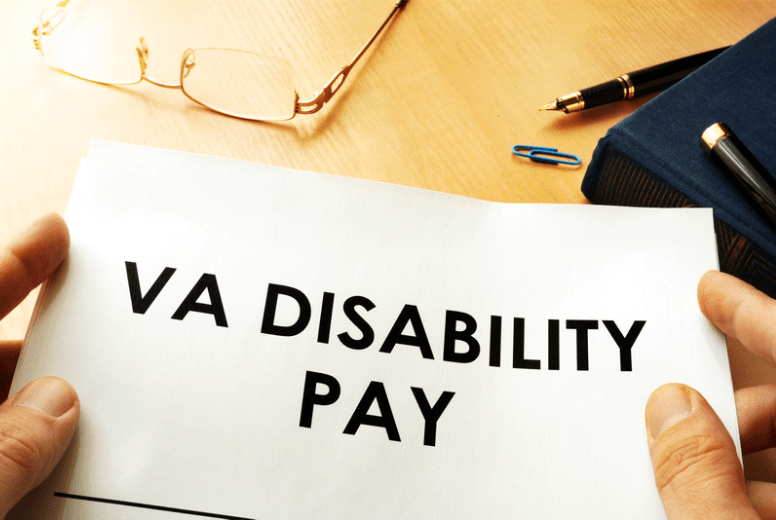The U.S. Court of Appeals for the Federal Circuit, which for all practical purposes is the “supreme court” for veterans claims denied by VA, has issued a new decision extensively discussing the disability rating schedule that applies to veterans who are service-connected for PTSD. See Genaro Vazquez-Claudio v. Shinseki, No. 2012-7114, 2013 WL 1395804 (Fed. Cir. Apr. 8, 2013).
VA PTSD Disability Ratings Table
When evaluating PTSD, the VA considers the following rating table:
100% Rating
Total occupational and social impairment, due to such symptoms as: gross impairment in thought processes or communication; persistent delusions or hallucinations; grossly inappropriate behavior; persistent danger of hurting self or others; intermittent inability to perform activities of daily living (including maintenance of minimal personal hygiene); disorientation to time or place; memory loss for names of close relatives, own occupation, or own name.
70% Rating
Occupational and social impairment, with deficiencies in most areas, such as work, school, family relations, judgment, thinking, or mood, due to such symptoms as: suicidal ideation; obsessional rituals which interfere with routine activities; speech intermittently illogical, obscure, or irrelevant; near-continuous panic or depression affecting the ability to function independently, appropriately and effectively; impaired impulse control (such as unprovoked irritability with periods of violence); spatial disorientation; neglect of personal appearance and hygiene; difficulty in adapting to stressful circumstances (including work or a worklike setting); inability to establish and maintain effective relationships.
50% Rating
Occupational and social impairment with reduced reliability and productivity due to such symptoms as: flattened affect; circumstantial, circumlocutory, or stereotyped speech; panic attacks more than once a week; difficulty in understanding complex commands; impairment of short- and long-term memory (e.g., retention of only highly learned material, forgetting to complete tasks); impaired judgment; impaired abstract thinking; disturbances of motivation and mood; difficulty in establishing and maintaining effective work and social relationships.
30% Rating
Occupational and social impairment with occasional decrease in work efficiency and intermittent periods of inability to perform occupational tasks (although generally functioning satisfactorily, with routine behavior, self-care, and conversation normal), due to such symptoms as: depressed mood; anxiety; suspiciousness; panic attacks (weekly or less often); chronic sleep impairment; mild memory loss (such as forgetting names, directions, recent events).
10% Rating
Occupational and social impairment due to mild or transient symptoms which decrease work efficiency and ability to perform occupational tasks only during periods of significant stress, or; symptoms controlled by continuous medication.
0% Rating
A mental condition has been formally diagnosed, but symptoms are not severe enough either to interfere with occupational and social functioning or to require continuous medication.
Vazquez-Claudio v. Shinseki
In Vazquez-Claudio v. Shinseki, the Federal Circuit ruled that the most important consideration when rating psychological disorders is the symptoms associated with each rating. For example, if a veteran is trying to get a 70% rating, it is less important that he prove that he have “[o]ccupational and social impairment, with deficiencies in most areas, such as work, school, family relations, judgment, thinking, or mood,” and more important that he prove that he have the symptoms associated with that rating, which include “suicidal ideation; obsessional rituals which interfere with routine activities; speech intermittently illogical, obscure, or irrelevant; near-continuous panic or depression affecting the ability to function independently, appropriately and effectively; impaired impulse control (such as unprovoked irritability with periods of violence); spatial disorientation; neglect of personal appearance and hygiene; difficulty in adapting to stressful circumstances (including work or a worklike setting); inability to establish and maintain effective relationships.”
So, in any case where you are trying to receive a higher rating for PTSD, remember that the most important thing you must prove is that you have the symptoms associated with each disability rating.
More Information and Help with VA Disability Ratings for PTSD
You can learn more about VA disability compensation ratings and VA compensation for post-traumatic stress disorder. For assistance understanding the VA rules as applied to your case, we encourage you to contact our advocates for veterans. We pride ourselves on keeping up to date on the latest rulings and studies on PTSD. And helping veterans is all we do.

How to Apply for VA Disability Compensation
It's one thing to know how to apply for VA disability compensation. It's another to understand the...

What is the VA DBQ?
What is the VA DBQ? A VA Disability Benefits Questionnaire (DBQ) is a form used to convey...

Most Commonly Approved VA Disability Claims
Most Commonly Approved VA Disability Claims Veterans receive VA disability benefits for a wide...





